Solar Powered Lights for Stairs That Survive Harsh Weather
Outdoor staircases, whether leading to a front porch, backyard deck, or garden pathway, pose unique safety and aesthetic challenges. Poorly lit stairs can become hazardous, especially during rain, snow, or fog. Solar powered stair lights offer an eco-friendly, cost-effective solution to illuminate these areas while withstanding harsh weather conditions. With advancements in waterproof solar lights and motion sensor outdoor lighting, these fixtures combine durability, functionality, and energy efficiency. This article explores the benefits of IP65 waterproof solar lights, user experiences with motion-sensing models, and practical tips for battery replacement to ensure long-term performance.
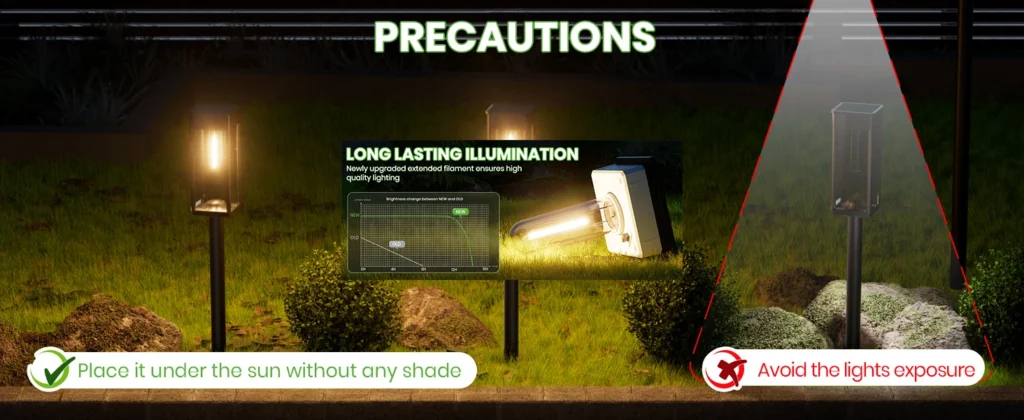
Why Choose Solar Powered Stair Lights?
Solar powered stair lights harness energy from the sun, eliminating the need for complex wiring or high electricity costs. These lights are particularly ideal for outdoor staircases exposed to unpredictable weather. The IP65 rating, a standard defined by the International Electrotechnical Commission, ensures that a device is dust-tight and resistant to water jets from any direction, making it suitable for harsh weather lighting like rain and snow. Unlike traditional lighting, solar lights with this rating can endure prolonged exposure to moisture without compromising performance, as noted in discussions about outdoor equipment durability.
Beyond weather resistance, solar stair lighting offers easy installation. Most models come with adhesive backing, screws, or stakes, allowing users to mount them on stair risers, railings, or adjacent walls without professional help. This flexibility makes them a favorite for homeowners seeking eco-friendly outdoor lighting that enhances safety and ambiance.
The Importance of IP65 Waterproofing for Outdoor Stair Lights
The IP65 rating is a critical factor when selecting solar powered stair lights for outdoor use. The “6” indicates complete protection against dust, while the “5” signifies resistance to water jets, ensuring the lights remain functional in heavy rain or snow. This level of protection is essential for outdoor stair lighting exposed to elements like wind-driven rain or melting snow, which can damage lesser-rated fixtures. For instance, IP65 waterproof solar lights are commonly used in solar garden lighting and pathway lighting applications, where they maintain reliability despite challenging conditions.
Unlike higher ratings like IP67 or IP68, which are designed for submersion, IP65 strikes a balance between robust protection and practical design for outdoor stair lighting. It ensures that lights can handle rain and snow resistance without the added cost of over-engineered waterproofing. For staircases, where water may splash or pool during storms, this rating provides ample protection while keeping costs manageable.
Motion Sensor Technology: Enhancing Functionality and Efficiency
Motion sensor outdoor lighting adds a layer of convenience and energy efficiency to solar powered stair lights. These lights activate only when movement is detected, conserving battery life and reducing unnecessary illumination. Reddit users frequently praise motion sensor solar lights for their ability to light up staircases precisely when needed, such as during late-night arrivals or when carrying items up steps. The sensors typically detect motion within a 10-16 foot range, often with a 120° to 300° detection angle, making them ideal for stair safety lighting.
User experiences highlight the practicality of motion-activated stair lights. One homeowner shared that their solar motion sensor lights installed on a backyard staircase activated reliably when approaching, providing bright illumination for safe navigation. Another user noted that the energy-efficient solar lights saved battery power during long winter nights, extending the lifespan of the system. However, some users mentioned that overly sensitive sensors could trigger false activations from pets or passing wildlife, suggesting careful placement away from high-traffic animal paths.
Durability in Harsh Weather: What Users Say
Durability is a top concern for Reddit users considering solar powered stair lights for outdoor environments. Many emphasize the need for weather-resistant stair lights that can withstand extreme temperatures, heavy rain, and snow. IP65 waterproof solar lights consistently receive positive feedback for their ability to endure these conditions. For example, a user in a snowy region reported that their solar stair lighting with an IP65 rating functioned flawlessly through blizzards, with no water ingress or flickering. Another user in a coastal area appreciated the corrosion-resistant materials, such as ABS plastic or stainless steel, which prevented rust from salty air.
The use of UV-resistant materials in these lights further enhances their longevity. Exposure to sunlight can degrade lesser-quality plastics, but high-quality solar outdoor lighting is designed to resist fading and cracking. This durability ensures that solar powered stair lights maintain both functionality and aesthetics over time, even in regions with intense sun or freezing winters.
Battery Replacement Tips for Long-Term Performance
While solar powered stair lights are low-maintenance, their batteries eventually require replacement to maintain optimal performance. Most models use rechargeable AA or AAA batteries, typically NiMH or Li-ion, with a lifespan of 1-2 years depending on usage and climate. Here are practical tips for replacing batteries to keep your solar stair lighting running smoothly:
- Identify the Battery Type: Check the product manual or manufacturer’s website to confirm the battery specifications. Using the correct type (e.g., NiMH 1.2V) ensures compatibility and performance.
- Access the Battery Compartment: Most solar powered stair lights have a sealed compartment to maintain their IP65 rating. Use a small screwdriver to carefully open the compartment, ensuring not to damage the waterproof seal. If the seal appears worn, consider replacing it to maintain rain and snow resistance.
- Choose High-Quality Batteries: Opt for reputable brands with high mAh (milliamp-hour) ratings for longer runtime. For example, a 2000mAh NiMH battery can provide 8-12 hours of light after a full charge, ideal for motion sensor solar lights in low-sunlight regions.
- Clean the Solar Panel: Before replacing the battery, clean the solar panel with a soft cloth and mild detergent to remove dirt or snow buildup. A clean panel ensures efficient charging, which can extend battery life.
- Test After Replacement: After installing new batteries, place the light in a sunny spot for a full day’s charge. Test the motion sensor outdoor lighting at night to confirm consistent performance.
- Dispose of Old Batteries Properly: Recycle old batteries at designated facilities to minimize environmental impact, aligning with the eco-friendly ethos of solar outdoor lighting.
Reddit users often share that replacing batteries every 12-18 months keeps their solar stair lighting reliable, especially in areas with frequent harsh weather lighting demands. Some recommend keeping spare batteries on hand during winter months when solar charging may be less efficient due to shorter daylight hours.
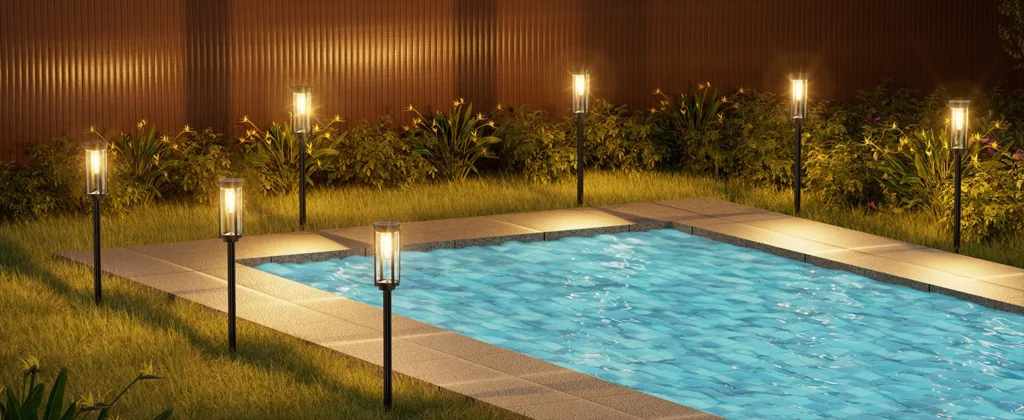
Installation and Maintenance Best Practices
Installing solar powered stair lights is straightforward, but strategic placement enhances their effectiveness. Position the solar panel to receive at least 6 hours of direct sunlight daily, avoiding shaded areas under trees or eaves. For motion-activated stair lights, angle the sensor to cover the staircase approach while minimizing false triggers from nearby pathways. Secure the lights firmly to prevent movement during high winds, using screws for permanent installations or adhesive for temporary setups.
Maintenance is minimal but essential. Regularly inspect the lights for debris or snow accumulation, particularly on the solar panel. Wipe down the fixtures with a damp cloth to maintain their IP65 waterproof integrity. For motion sensor solar lights, periodically test the sensor’s sensitivity and adjust settings if the light offers customizable modes, such as dim-to-bright transitions or timer durations.
Choosing the Right Solar Stair Lights
When selecting solar powered stair lights, consider the following factors to ensure they meet your needs:
- Brightness (Lumens): For stair safety, aim for 50-200 lumens per light, depending on the staircase’s size and ambient lighting. Higher lumens are ideal for outdoor stair lighting in dark, rural areas.
- Material Quality: Look for corrosion-resistant materials like stainless steel or UV-resistant ABS plastic to ensure durability in harsh weather lighting conditions.
- Battery Life: Choose models with batteries that provide 8-12 hours of illumination after a full charge, especially for motion sensor outdoor lighting in low-sunlight climates.
- Sensor Range and Angle: A 10-16 foot detection range with a 120°-300° angle is sufficient for most staircases, ensuring timely activation without excessive battery drain.
- Aesthetic Appeal: Select designs that complement your outdoor decor, such as warm white LEDs for a cozy ambiance or cool white for modern aesthetics.
Environmental and Cost Benefits
Solar powered stair lights align with the growing demand for eco-friendly outdoor lighting. By relying on renewable energy, they reduce carbon footprints and eliminate electricity costs. Over time, the initial investment—often $20-$50 for a set of 4-6 lights—pays off through energy savings and minimal maintenance. Their IP65 rating ensures longevity, reducing the need for frequent replacements, which further supports sustainability.
Real-World Applications and User Feedback
Reddit communities like r/HomeImprovement and r/SolarEnergy highlight the versatility of solar stair lighting. Users report using these lights not only for staircases but also for solar garden lighting, pathway lighting, and deck illumination. One user described how motion sensor solar lights transformed their uneven backyard steps into a safe, inviting feature for evening gatherings. Another praised the weather-resistant stair lights for withstanding a hurricane season without failure, emphasizing the reliability of IP65 waterproof solar lights.
However, some users caution about the limitations of solar outdoor lighting in heavily shaded areas or during extended cloudy periods. To mitigate this, consider hybrid models that offer USB charging as a backup, ensuring consistent performance during low-sunlight conditions.
Conclusion
Solar powered stair lights with an IP65 rating offer a robust, eco-friendly solution for illuminating outdoor staircases in harsh weather. Their motion sensor outdoor lighting capabilities enhance safety and efficiency, while corrosion-resistant materials and UV-resistant materials ensure durability against rain, snow, and sun exposure. By following proper installation, maintenance, and battery replacement practices, homeowners can enjoy reliable stair safety lighting for years. Whether you’re navigating a snowy porch or enhancing a garden pathway, these lights provide a perfect blend of functionality, sustainability, and style. For those seeking energy-efficient solar lights that stand up to the elements, IP65 waterproof solar lights are a proven choice, backed by positive user experiences and industry standards.

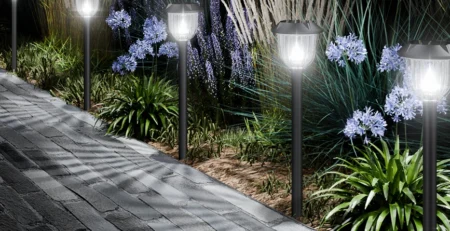
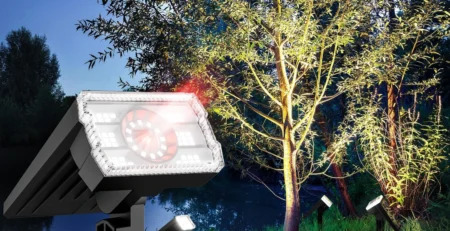
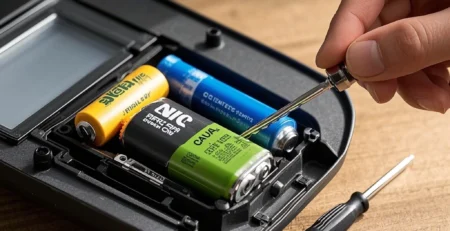
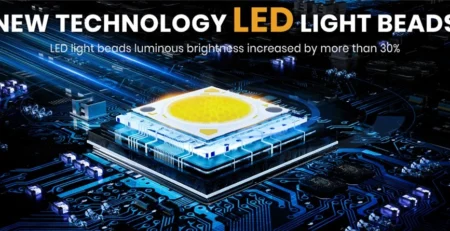
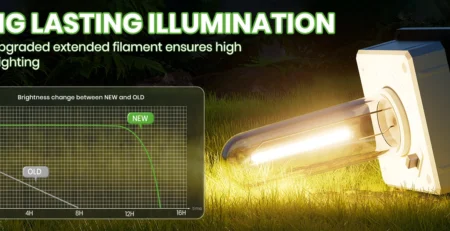
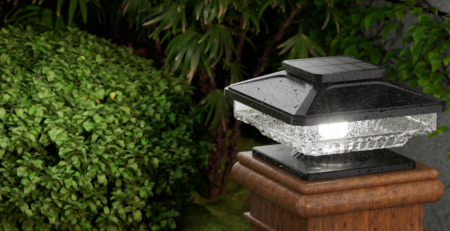
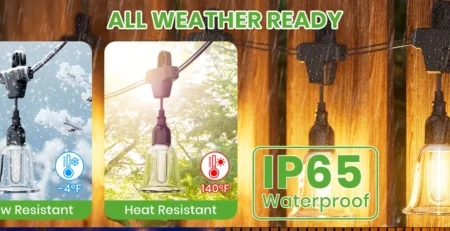
-450x231.png)
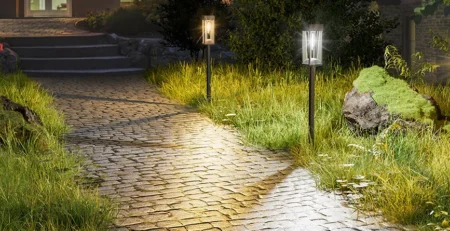
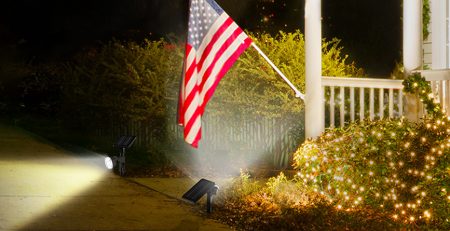
Leave a Reply